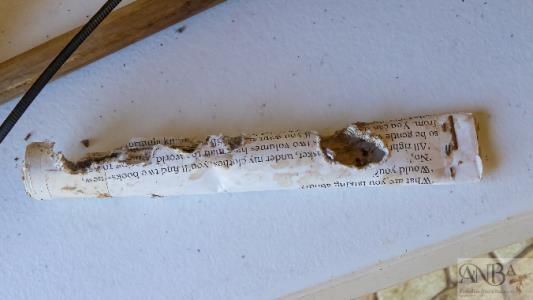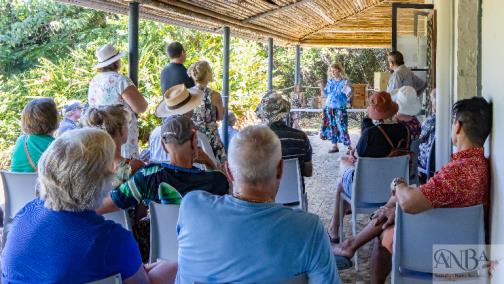The Cassowary Coast branch hosted our first Native Bee Mini Expo in November as part of Australian Pollinator Week. Ninney Rise heritage house in Bingil Bay was cho-sen as the venue, due to its beautiful location and historical link to environmental protection. The house was built by John Busst in the 1950s and during the 1960s, Ninney Rise became the centre for the “Save the Reef” campaign. This activism stopped proposed drilling for oil on the Great Barrier Reef (GBR) and led to the eventual declaration of the GBR as a national park. And so it seemed fitting that our little expo was held at this environmentally significant house.
The expo included 5 displays: photo and poster gallery, social hives, bee hotels, gardens for bees, and honey tasting.
Jane Frost created a poster and photo gallery of all types of bees and talked about her journey with bee photog-raphy, highlighting her transition from videoing on her phone in order to understand bee movement, to phone photos, and then DSLR photography. Jane also recognised the quality of Suzanne’s phone photos acknowledging that you don’t need an expensive camera to take great photos of bees.
Roger displayed a selection of his self-built hives explaining some of the design features he has adopted. Some of the features discussed were box size according to species volume, insulation requirements according to types of timber used, hive location and entrances. Techniques for duplication also influence his design e.g. clypearis duplicate well by eduction and so boxes are designed for eduction. Sapiens are notoriously difficult to duplicate and so brood lifts are more suitable for duplication of hives.
Following on from Roger’s social bee hives, Sue showed her bee hotels for solitary and semi-social bees, built from a variety of materials. The simplest and easiest material she has used was paper rolled into tubes which, although being highly successful from the bee’s perspective, had the pitfall of being easily chewed by native rodents and marsupials.
Sue gave an entertaining talk with her main takeaway being the importance of the length of tubes in a hotel (15cm) to ensure a balance of male and females hatch.
Sandy displayed a range of native plants ranging in heights for different sized gardens, and all the plants were known to be visited by native bees. Examples included: the lilly pilly and the native gardenia, both of which are rich in nectar and pollen; dianella which is a favourite of leaf cutters; and the kauri pine which attracts resin bees. Participants at the expo were urged to look at the benefits of diverse planting, providing at least 2 species of flowering plants at any one time to encourage pollinators to keep visiting all year round.
The afternoon ended with a honey tasting with 7 different honeys being tasted. The varieties included 2 sapiens, 3 hock, 1clypearis and 1 carb honey where 3 samples were sup-plied by attendees and 4 were commercially sourced from Zac Petersen at Cairns Native Bee. Zac’s commercial honeys are harvested frequently and as such don’t have a long fermentation time in pots. This could account for them being very easy on the pallet, less acidic and closely resembling a European bee honey in taste. The other honeys had more of the characteristic ‘sugarbag’ flavour with a strong acidic tang and aftertaste.
The expo was a great success and we received lots of supportive and positive feedback. Thanks to everyone who helped: Sandal from Ninney Rise, Jane, Roger, Sue, Bert, Sandy, Jeannie, Shane and Deirdre.
From: Liz Lang, Secretary / Treasurer
Cassowary Coast Facebook page








